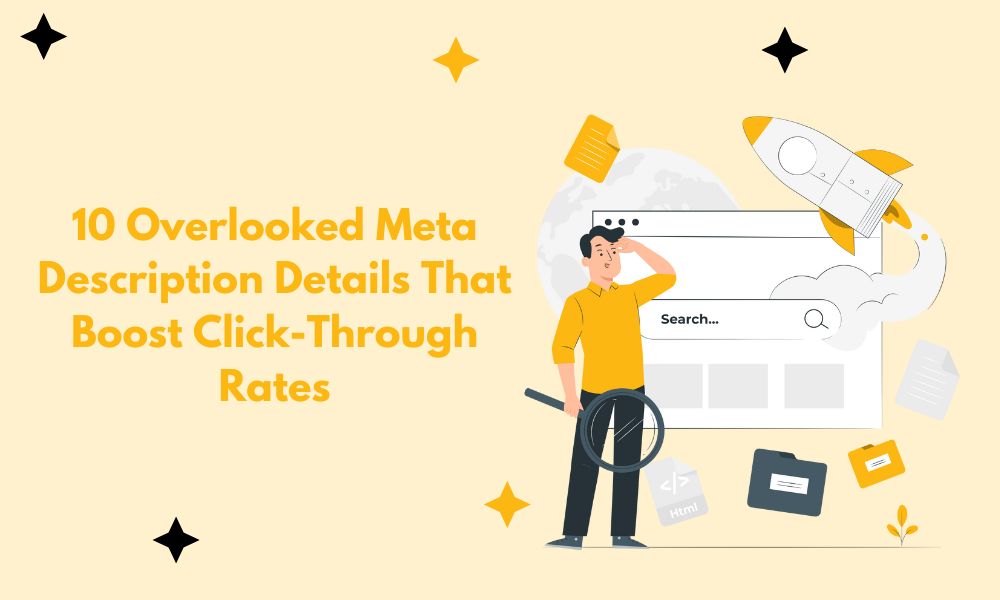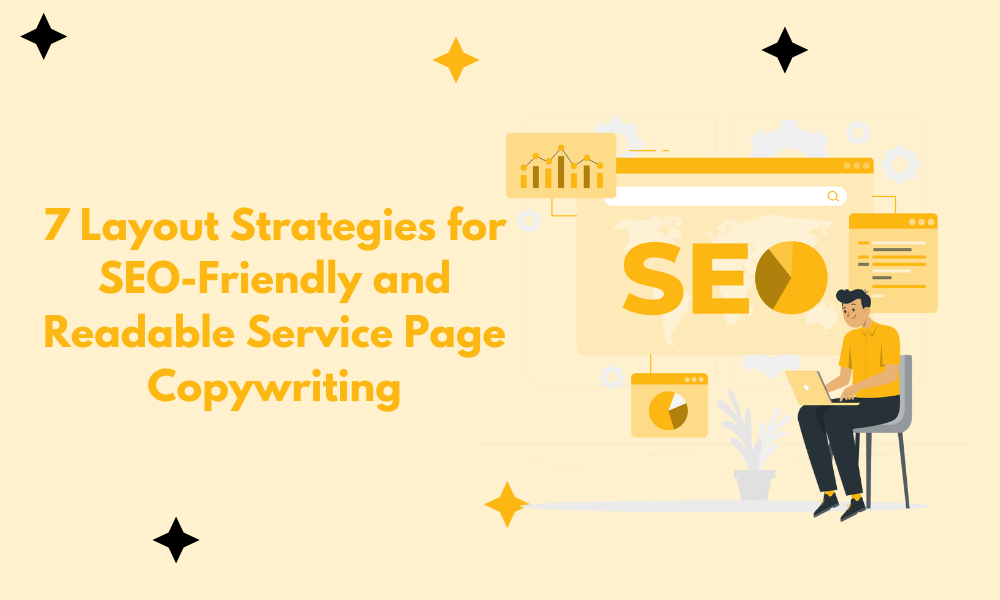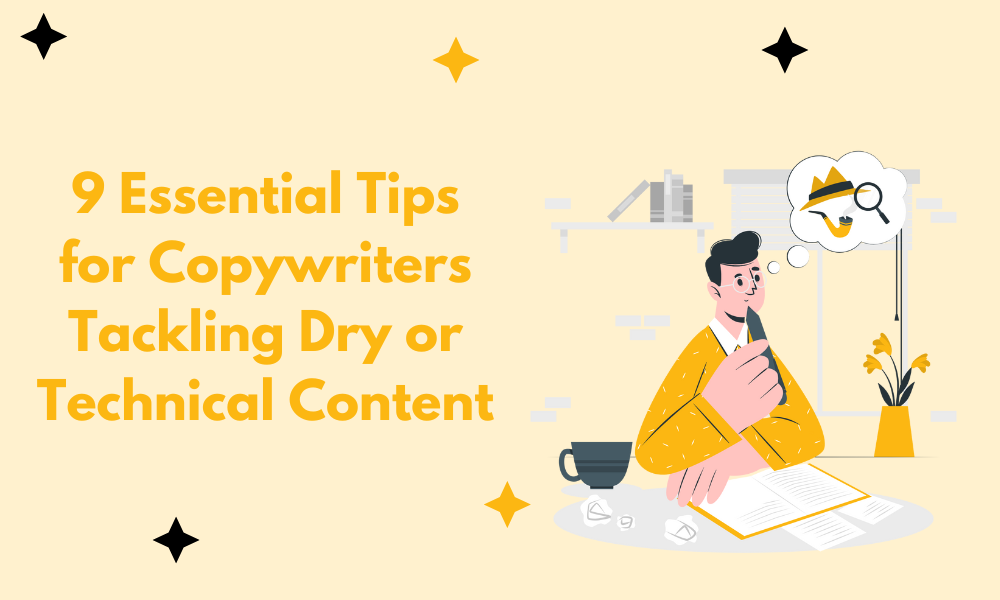Trying to succeed online is like finding your way through a maze filled with algorithmic challenges and keyword puzzles. It seems tricky on the surface, but if you’re thinking of starting a site blog for SEO to light up the way to stand out on the internet.
Think of your website as a secret prize, ready to be discovered by visitors. Your blog posts are often the place that brings in most of your relevant traffic. According to the 2023 Marketing Trends Report by HubSpot, over 29% of marketers use a blog or website to attract and convert their potential leads online.
So, if you are wondering how you can increase your website traffic and convert leads into customers, the answer is blogging for SEO. Once you learn to blog effectively for SEO, your website’s visibility will skyrocket. In this post, we will mention lots of SEO blogging tips that will guide you on how to blog strategically for the best results. Let’s start with the basics first.
What is Blog SEO?
Blog SEO (Search Engine Optimisation) is about writing and optimising blog posts to be easier for search engines to find and rank on search engine results pages (SERPs). This means making the content visible on pages like Google, Bing, or Yahoo using different tactics to make your blogs appealing to these search engines.
Key tactics involve performing keyword research and using these keywords, creating high-quality and relevant content, and optimising meta tags and descriptions. You also want to enhance the speed and usability of your website, build high-quality backlinks, and use social media to promote your blogs.
By implementing an effective SEO content strategy for blogs, websites can grow organic traffic. This boosts the site’s online presence and ranking in search engine results pages (SERPs).
How Does Blogging Help With SEO?
Blogs are key in boosting SEO by offering new, relevant, and engaging content that search engines value. Frequently updating a blog with high-quality content shows search engines your website is active and trusted in its niche. Moreover, blogs allow adding specific keywords and long-tail phrases, optimising content for specific search phrases, and boosting the odds of getting a top spot on SERPs.

According to one study, the top organic result on Google gathers about 43.32% of clicks on average, whereas the link in the tenth position only gets around 3.11%. Plus, nearly nine out of ten people don’t even explore past the first page of their search results. These results show that enhancing blog SEO boosts a website’s visibility on search engines and draws in fresh visitors.
Blogging makes internal linking easier, too. It allows websites to build a series of linked pages to build up a sitemap for easier indexing. This not only improves website structure but also makes it easy for search engine crawlers to browse. Furthermore, blog posts attract backlinks from other sites. This escalates domain authority and credibility, which are both crucial for the success of SEO.
How to Optimise Your Blog for SEO?
Making your blog SEO-friendly is key to boosting its presence and attracting natural visits. From keyword research to meta tag optimisation and URL structuring to creating high-quality unique content, you can make your blog post stand out with these approaches.
Remember to also focus on other equally important factors like website speed, mobile responsiveness, and user experience will further help. So, are you wondering how to do SEO for a blog? Follow the below steps to learn how to blog for SEO.
1. Identify the Target Audience
Begin improving your blog’s SEO by knowing your target readers. Understanding your target audience means you can customise your content according to their needs and interests, making it relevant and intriguing. For this, you need to conduct market research and analyse demographics. You want to learn about your audience’s preferences and behaviour. The Semrush Market Explorer tool is a great place to start for this.

Once you have audience information, use this data to craft content that resonates with them, address their issues, and provide answers to their problems. A pro tip is to keep the content simple, clear, and engaging. By focusing on your target audience, your blog will draw in the right visitors. Plus, it’ll potentially show up higher in search engine results.
2. Perform Keyword Research
It’s crucial to do keyword research for blog content. This should happen before pen is put to paper. To do so, you want to use tools to find the right keywords your audience is looking for. Aim for those with a high number of searches and low competition. This strategy will help increase website traffic with blogging. The gold standard for keyword research is Ahrefs, but for a cost-effective alternative, you can use Ubersuggest.

Make sure to weave these keywords into your blog posts, headings, and titles. Aim for 1 main keyword to be stated multiple times throughout the post. Put this keyword in the H1, first 100 words of the post and also aim for a H2. Semantic keywords (secondary keywords) should then be sprinkled throughout.
However, grammar should always take precedence over keywords. Make sure the keywords fall naturally or do not include them. Additionally, think about including long-tail keywords or different word meanings for more precise search queries.
3. Assign a Primary Keyword for Each Blog Post
It’s important for each blog post to have a primary keyword. Make sure the keyword you choose represents your post’s content well and matches what your readers are searching for. Incorporate the focus keyword in your title, headings, meta description, and in the entire content. The keyword density should feel natural and should not impact the readability. Aim to get this keyword in 5-10 times per 1000 words or so.
Optimising each blog post to a specific keyword can enhance its perceived worth to search engines. Boosting the post’s presence on search rankings and encouraging more visitors to your blog from natural, unpaid sources.
4. Write a Captivating Meta Title & Description
Making a catchy meta title and description really matters for optimising your blog’s SEO. A meta title is the large text that is shown on Googles search page. A meta description is the smaller text under the meta title that describes what the post is about. Meta titles should be around 50-60 characters and meta descriptions should be around 160 characters. Include keywords in both!
Make both of these impactful by trying to evoke emotion within people yet also mirroring your post’s content. Just as importantly, make a short meta description that teases the post’s topic, luring readers to your blog. Incorporate related keywords smoothly, but keep the description captivating and informative.
5. Resist the Urge to Keyword Stuff
Packing your content with keywords, known as keyword stuffing, does more harm than good for your SEO. Try to incorporate keywords naturally. Make sure to place them in your titles, headings, and within your content to make it readable and pertinent.
Use variations and synonyms to maintain diversity. Focus on the reader’s experience; write for people, not just for crawlers. Good quality content connects with readers and gets shared, earns backlinks, boosting overall SEO efforts.

Often, people say that keywords should make up for 2%, but I don’t necessarily agree with this approach. It’s much more beneficial to make a great post with fewer keywords than a mediocre post filled to the brim with keywords. Shoot for natural, but keep in mind keyword placement is very important and shouldn’t be forgotten.
Search engine algorithms penalise keyword stuffing, possibly causing falling rankings or deindexing. By ignoring this urge and focusing on quality, you will create content that shows up more often in search results.
6. Focus on the Reader’s Experience
If you are thinking about how to write SEO-friendly blog posts, it is all about keeping your readers experience in view. Give them content that is well-structured, readable, and valuable. You also want to use clear headings, bullet points, and relevant visuals, making your blog flow easier for readers.
Boost your site’s loading speed and make sure it runs smoothly on smartphones for easy browsing. Hook your readers with interesting content that addresses what they are looking for. Again, include relevant keywords, but make sure they feel naturally added, not forced or against standard grammar.
7. Optimise Images & Videos
Boost your blog for SEO by optimizing your images, videos, and motion graphic content.. Use descriptive filenames and include relevant keywords in the alt text as it will help you show up in image searches. Keep image files lean by compressing them. It cuts the load time, which is exactly what you need to get the best SEO results.

Upload your videos to sites like YouTube and embed them in your blog articles. Make sure to optimise titles, descriptions, and tags with appropriate keywords. This increase in engagement and dwell time. By adding enhanced multimedia, you can make your content easy to find with an improved user experience.
8. Use Evergreen URLs
Evergreen URLs stay crucial and relevant over time. When you want your blog to top SEO rankings, make your URLs filled with relevant keywords and descriptive. It should tell what the content is about. Stay away from dates or specifics that might become outdated, as these evergreen permalinks remain important no matter when someone visits them. So, instead of using
blog.com/post/2023/best-seo-practices
Use this permalink:
blog.com/post/best-seo-practices
Strive for consistency in your site’s URLs for easier browsing and layout. Using evergreen URLs boosts the user experience and also enhances your site’s visibility on search engines. This increases the chances of people finding and sharing your content over time, contributing to overall SEO success.
9. Reduce Your Bounce Rate
The key to boosting your blog for SEO is reducing the site’s bounce rate. An ideal bounce rate falls between 26% and 40%. On the other hand, a bounce rate is considered high if it’s between 56% and 70%. To know your blog’s bounce rate, view the data on Google Analytics.
To reduce the bounce rate, here are a few questions to keep in mind:
- Does your content satisfy what the searcher wants?
- Is your website’s design visually pleasing?
- Can readers easily read the text?
- Can people scan the text for quick information retrieval?
- Does your webpage load quickly?
- Does it work smoothly on all devices?
If your answer to these questions is yes, you’re on the right path to creating a user-friendly site and reducing bounce rates. If not, audit your website and figure out what needs tweaking to boost user involvement. You can do this by running a Screaming Frog audit and working through the errors. By offering rich content paired with effortless navigation, you can lower your bounce rate, keep viewers longer, and improve your blog’s ranking in search engines.
10. Add Schema Markup
For better SEO of your blog, think about using schema markup with markup formats like JSON-LD or Microdata. This structured data gives extra detail to search engines about your content, boosting its presence in search results. Using schema markup can spotlight main facts like article title, publication dates, author’s names, and ratings.
![What Is Schema Markup? [Complete Guide 2021] - Vine Digital](https://www.vinedigital.ie/wp-content/uploads/2022/10/serp-nikon-1.jpg)
For example, you’re critiquing a smartphone. You can utilise schema tags to highlight main features like its name, model, manufacturer, cost, existing stock, and reviews. Doing so will improve the look for your search snippets in search results more users might click your blog link.
Adding a schema markup requires creating HTML to add to your web pages. For this one it’s worth contacting an SEO expert to help. Or you can follow Niel Patel’s guide on adding a schema markup.
11. Monitor Metrics Regularly
To optimise your blogs for SEO, it’s crucial to review metrics regularly. Keep an eye on key performance indicators (KPIs) such as organic traffic, bounce rate, time spent on site, and rates of actual conversions. Analyse data from Google Analytics and Search Console to spot patterns, areas for improvement, and tactics that work well.
Change your SEO methods based on these findings, like tweaking keywords, refreshing content, or bettering site layout. Keep checking and changing your method to make your blog stand out. This will also draw in your desired readers. Frequent checks let you make smart choices to keep enhancing your blog.
12. Update Existing Content
Keep your blog’s SEO on point by updating old content regularly is as important as creating new blog posts. Adding fresh details or data to posts tells search engines your information is still worth a read. First, find articles getting fewer views or containing old data. Next, add new facts or trends, use effective keywords, and spruce up the layout for clear reading.
For this, you should aim to update content every 3-6 months. Doing a monthly content review at the end of the month makes it easy to keep things bitesize on a monthly basis rather than having to update everything all at once.
Refreshing old content can be an ideal chance to improve your on-page SEO for blogs. Modify the layout, narrow the search intent, include internal and external links, and add tailor-made images to amp up each blog article.
13. Create a Sitemap & Robots.txt File
Making a sitemap and robots.txt file is key for your blog’s SEO boost. The sitemap guides search engines to understand your site’s layout and index pages better. A robots.txt file guides the search engine spiders on which pages they should crawl or skip. It helps keep your blog content relevant and indexed correctly.

Regularly making changes to these files and uploading them through Google Search Console can improve how easily your blog can be crawled. It also makes sure your content can be readily found by search engines and users.
It is important to know that with any text editor, you can manually create a sitemap and robots.txt file. But, for blogs with over ten URLs, using an SEO plugin is suggested. It makes everything easier and quicker.
14. Create Custom 404 Pages
Creating personalised 404 error pages is vital for your blog’s SEO optimisation. When readers find a broken link or a missing page, a custom 404 error page will take them back to your website’s primary content or recommends similar pages.
To make users stick around, design the page to fit your brand’s style and voice. Include easy navigation options and a search bar. Also, offer links to well-liked or new posts for more exploration.
15. Breadcrumbs & Customised Permalinks
Breadcrumbs show the steps a visitor has taken to get to the page. They look something like this.
Home Page > Blog > Blog Categories > Post Name
These help Google understand your site layout easier and help with your blog. Not to mention, it also makes it easier for visitors to quickly skip back to a page they visited previously.
Custom permalinks work in a similar way. However, they are part of the URL. They show the flow of the website structure, allowing Google to understand where someone is within your website. This involves adding categories for your blog posts to group them together with other posts. They look something like this.
www.SiteName.com/blog/blog-category/post-name
Use both these techniques to assist Google and make your website easier to crawl.
16. GEO (Generative Engine Optimisation)
This is a completely new line of SEO that focuses on the AI tools Google has recently added to its search engine. GEO is essentially optimising your posts so that they show up within the generative text box when a certain phrase is searched. Little is known about how to optimise your pages for GEO, but make sure to keep up to date with the latest best practices.
17. FAQs & People Also Ask
Use a frequently asked questions section within all of your blog posts so you can appear within the ‘People also asked’ section of SERPs. This will allow your site to appear high in search engines if your specific questions answer what someone is searching for. This will drive more traffic to your posts and boost your page authority.
Factors That Affect Blog SEO
For bloggers today, getting a hold on search engine optimisation is key. It helps grow your audience by attracting more readers. Understanding the key factors that impact blog SEO can change how visible your site is and how many people visit.
There are many factors at play when it comes to a blog’s ranking on search engine results, including keyword selection, domain name, technical SEO for blogs, backlinks, and more. Let’s look at vital factors that help blog SEO, giving useful tips for you to boost your content and raise your website’s rank in search results.
Domain Name
The domain name you pick for your blog is an important factor that can significantly impact your blog’s SEO. A good name that’s easy to remember and keyword-rich can help your site climb search rankings. Search engines often use those keywords in your blog’s name to match it with what people search for.
So, if you have a blog about digital marketing, fitting domain names might be “DigitalMarketingInsights.com” or “MarketingMavenHub.com.” These names clearly spell out the blog’s niche, drawing the right readers. On the other hand, domain names like “BestBlog123.com” or “MyRandomSite.net” won’t do that as they’re not as clear or relevant to the niche.
Try to avoid hyphens (-) when possible, and for best results, use a suitable domain ending such as .co.uk for a UK website or .com for a website that serves internationally. A domain name that reflects your blog’s niche can bring more relevant and targeted visitors.
Quality of Content
As we briefly discussed above, a blog for SEO depends heavily on content quality. Search engines prioritise engaging, valuable, and relevant content. Well-written articles, rich with unique insights, detailed study, and practical suggestions generally appear higher on search results. As well as this, you can use storytelling to captivate your audience to read on.
Contrary to this, poorly written, thin, or repeated content can be harmful to your SEO efforts. Including elements like images, videos, and infographics can boost content attractiveness and the experience of the user.
Continual edits and improvements to the content for suitable keywords, user intent, and ease of reading are vital for good SEO results and for drawing in site visitors. Ultimately giving valuable content that your audience wants, which will eventually boost blog SEO.
- Backlinks
Backlinks play a key role in blog SEO results. They are like a “votes of confidence” from other sites, telling search engines your content is credible and authoritative. There are several factors that can change how backlinks affect SEO.
However, it is important to know that not all backlinks are valuable. When it comes to getting backlinks from other sites, often more is not better. Quality over quantity should be a priority. To climb up in the SERPs, you need to concentrate on acquiring quality backlinks from authoritative sites within your chosen niche.
In fact, just one high-quality backlink can trump 1,000 low-quality ones. Great backlinks from trusted, related sources will boost a blog’s ranking in search engine results.
Site Structure & Design
Website structure and design greatly affect blog search rankings. A clear and intuitive structure helps engine crawlers move through and index content efficiently. Plus, design aspects that are easy to use, like easy reading on mobile devices, quick page loading, and intuitive navigation, improve how a visitor experiences the site. This can help reduce the bounce rate of your site and can boost engagement metrics.
Optimising site architecture is important. A well-structured site supports better SEO results. A few ways to do this include a clear hierarchy, proper internal linking, and logical URL structure, which improves overall SEO performance. As well as this you can add schema markup to your pages and use permalink hierarchies to show the breakdown of your site easier for crawlers.
Also, the design of your website and navigation matter to users as a good website design encourages users to stay longer instead of getting lost and closing the page. This can lead to higher user retention and create more chances for backlinks and conversions.
Page Speed
For blog SEO, page speed plays a key role. It directly affects both how users interact with your site and how it ranks on search engines. Sites that load quickly keep users interested which reduces the chance users leave early and promotes more time exploring. As a result, search engines recognise and reward these positive actions.
In a nutshell, Google sees web page speed as vital information giving preference to sites that provide a smooth user experience. Sluggish pages annoy people and results in more visitors leaving quickly.
Hence, you can enhance webpage loading speed using methods like optimising images, minifying CSS and JavaScript, and effective browser caching. Such steps play a big role in improving your blog’s SEO and user contentment.
Mobile Responsiveness
More people use phones and tablets to surf the web now. So, having a blog that looks good on these devices can boost your search engine rank. Search engines want people to have a great online experience, so they reward mobile-friendly blogs with higher rankings.
Blogs that are mobile-responsive shift smoothly to fit different screen sizes. They are easy to read and use on phones or tablets. Whereas websites that aren’t mobile-friendly to mobile devices might see more visitors bounce. They might also rank lower in searches made on mobile, which is a large portion of searched these days.
Optimising blog designs for phones helps improve user engagement and reduce bounce rates. In the end, it can boost SEO performance by fitting in with what search engines want and meeting what people expect in a world where mobile is king.
Index Date
The “index date” means the most recent time a search engine crawled and indexed a webpage. For blog SEO, having a recent index date is great. It means search engines often spot and acknowledge new content. This can positively boost your rankings.
Search engines like new and updated content as it shows relevance and authority. Sites with outdated index dates might not appear high in search results. Search engines view them as less active or relevant sites.
Therefore, making sure frequent indexing by regularly publishing new content and updating old content helps maintain visibility and improves overall SEO performance for blogs.
Off-Page SEO Strategies
When you SEO for blogs, you boost your search engine ranks and get more organic visits through several best SEO practices for blogging. Many of these methods include creating top-notch backlinks from authoritative sites in the same niche. SEO blogs also gain trust and respect when they guest post on well-known blogs, participate in industry forums, and form connections with influencers.
Active involvement on social media platforms and attending networking events can boost your brand visibility and pull in more people to your blog. Using off-page SEO methods is key to making your blog stand out on the internet. Here are a few off-page SEO strategies you need to apply when writing a blog for SEO purposes.
- Guest Posting for Link Building: Guest posting is a key strategy for building backlinks for blogs. It involves sharing useful content to trusted websites in the same niche. This allows SEO blogs to gain high-quality backlinks. It boosts your website’s authority and improves its ranking on search engines. By doing this, you can boost visibility and draw in relevant organic traffic to the blog.
- Influencer Marketing for SEO Boost: Partnering with influencers is a smart way to boost SEO for blogs. This tactic can bind a blog to a larger crowd, attract backlinks, and build trust. Influencers promote blog content for SEO, products, or services, contributing to increased website visibility and traffic.
- Engaging with Social Media Platforms: Using social media is key for successful off-page SEO. By posting blog articles on different social networks, you increase visibility, attract readers, and promote audience engagement. Regular engagement with followers, joining groups, and use of hashtags can boost your blog’s profile online. This can help achieve higher rankings in search engine results.
- Participating in Online Communities & Forums: Joining online communities and forums is a good off-page SEO approach. Making insightful comments, replying to queries, and sharing related blog posts can build your reputation. It also helps create connections and attract traffic to the blog. Also, discussions within specific online communities can generate natural backlinks, making the blog more visible.
Common Blog SEO Mistakes to Avoid
Maintaining your website’s visibility and visitor numbers hinges on avoiding common SEO mistakes of bloggers. By avoiding these mistakes and concentrating on best strategies, helps boost your blog’s SEO capability, drawing continuous natural visits to your website. Here are a few common mistakes you must avoid when writing your SEO-friendly blog:
- Skipping keyword analysis
- Not optimising meta tags and headings
- Missing chances to make internal links
- Not considering the optimisation for mobile
- Forgetting to make engaging top-quality content
- Applying black hat SEO tricks like stuffing keywords and purchasing backlinks
Get Started with SEO Writing
So, if you want to write high-quality and valuable SEO blogs, you’ll need dedication, patience, and a willingness to adjust to changing search engine practices. This guide’s tactics come in handy for both new and experienced writers who want to create SEO blogs. Concentrate on crafting excellent, meaningful content to please both Google and your readers.
Don’t forget to do extensive keyword research. Make sure your meta tags and headings are optimised. Use both on-page and off-page SEO tactics to get the best results. With regular work and dedication to doing everything right, your blog can become a trusted source in your field. It can bring in regular, organic visits for years.
How Long Will It Take to Get Traffic to My Blog
Generally, you can start to see some traffic within the first few months of launching your site. However, it will generally take between 6-12 months of consistent SEO efforts to start to see significant strategic.
This question is a little hard to answer because it depends on a multitude of different factors, including the competition level of your niche and how many resources you have to put into creating new content. Consistency is key, so try to keep consistent over as long a period as possible and you’ll be well on your way to getting a huge audience following your every move.
Can You Use AI Tools Like ChatGPT to Write SEO Blogs for You?
You can, but it’s not advisable to use AI tools like ChatGPT, Claude, or any other AI tool to write SEO blogs for you. You might have heard otherwise, but these tools can actually harm your SEO efforts instead of giving your site a boost. While they can generate heaps of content within a few seconds, they lack originality and serve you with repetitive and recycled content.
Google algorithms can easily identify repetitive content generated by AI and label your site for spammy content. If you really want to succeed in grabbing organic traffic with SEO blogging, you will have to put in the effort and write unique and original content for your site that is actually helpful for the readers. Remember, search engines like Google reward quality over quantity.
FAQs
Why is SEO blogging needed to get traffic on your site?
Blogging for SEO is key to attracting traffic by making your content easy for search engines to find and show. This boosts your site’s visibility and attracts relevant visitors.
How to make blog posts search-engine friendly?
You can improve your blog’s visibility on search engines by using relevant keywords in your content and crafting catchy titles and meta descriptions. Also, use the headers and make sure your blog is easy to read.
What are the common mistakes to avoid when doing SEO blogging?
A few of the common mistakes you want to avoid are not conducting keyword searches, not optimizing meta tags and headings, overlooking interlinking, and not creating high-quality and engaging content.
How much time does it take until the effects of SEO blogging start to show?
SEO blogging results can come quickly or slowly based on your strategy. It usually takes a few weeks to months. Content quality and how tough the competition is play a big role.
What are helpful tools and resources available for SEO blogging?
SEMrush and Ahrefs are great for keyword research. Yoast SEO can improve your content. If you want to track performance, Google Analytics has you covered. These are all handy resources available for SEO blogging.








